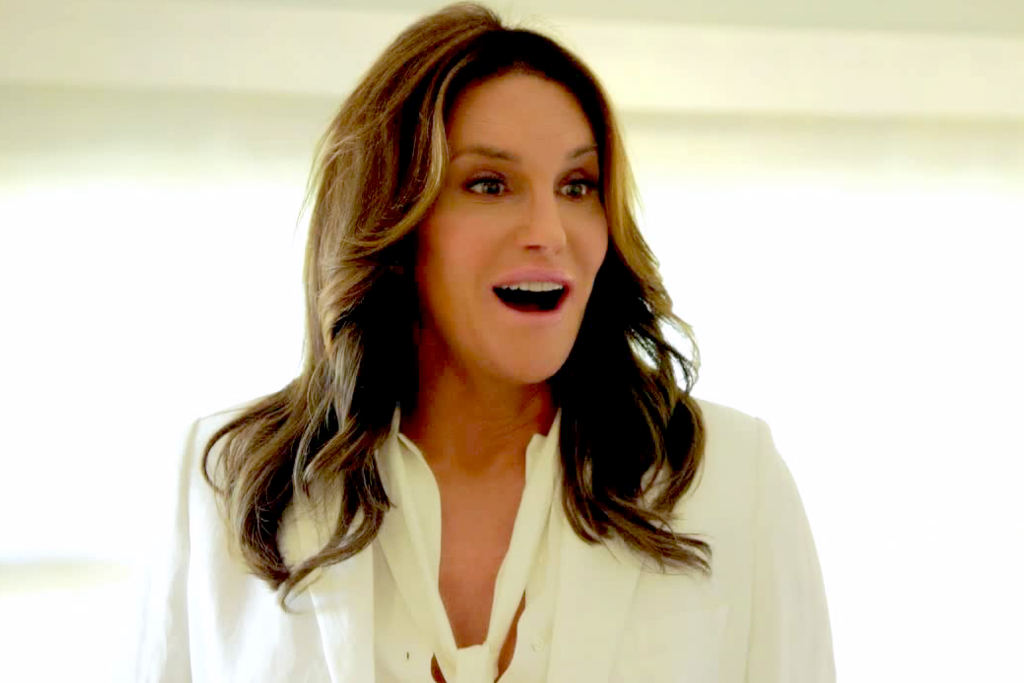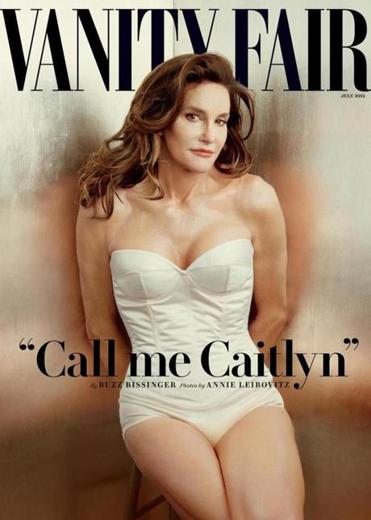Caitlyn Jenner Is The Transgender Hero We Deserve, But Is She The One We Need Right Now?
'I Am Cait' premiered last night on Foxtel.

I’m a transgender woman. I’ve been swallowing the oestrogen skittles for a little over four months. I still live my day to day life as a man, but occasionally I need to tell people that I’m transitioning. I’m often asked what my opinion is about Caitlyn Jenner. It’s a pretty easy touchstone for a hairstylist or beautician to latch on to, as they service what appears to be a dude with tiny boobs and amazingly soft skin.
The truth is that I’m conflicted. On the one hand, her transition has put the spotlight on trans issues, which is fantastic; but on the other hand she’s a conservative, and a Kardashian, and her idea of what it means to be trans and to be a woman kinda flies in the face of my own beliefs. I don’t think I like her. I don’t think she’s a bad trans person. She just kind of represents everything I think is wrong with popular media.
Caitlyn Jenner (as Bruce) sat down with Diane Sawyer at the end of April, one month after I started taking oestrogen. I thought it was pretty good (both the interview, and the hormones). It was a thoughtful look at Caitlyn’s story, and a decent primer on the basics of gender dysphoria and transition, articulated in a way that your average cisgender person could understand. It was palatable and informative. I was quite surprised and impressed, and I was really looking forward to seeing how this whole Jenner story would pan out. Especially in light of the changes that were happening in my own body.
But when Caitlyn came out on the cover of Vanity Fair, I was furious. I wrote to my editor: “What does it mean for trans people and women in general for Jenner to come out in a sexualised airbrushed lingerie shoot?”
Jenner had set herself up to be a transgender advocate and role model in the Dianne Sawyer interview. “We’re going to change the world!” she said. But this photo, to me, changed nothing. To me it underscored that the role of women in popular media was to be sex objects. Her last public act as a man was to give a thoughtful interview. Her first public act as woman was to wear her undies on the cover of a magazine.

Not only did I think it was dumb; I also thought it was dangerous. “The media promotes unrealistic ideals of the female body,” I wrote to my editor, “and now it’s promoting an unrealistic ideal of trans women’s bodies as well. Which is doubly dangerous; lots of trans people kill themselves because they don’t think they’ll ever be beautiful or acceptable”.
I was really emotional. Emotional about the photograph, and about my own transition. The day will come when I will have to go public with this whole sex change business, and while my profile is nothing compared to Jenner’s, I am reasonably well-known in my field. Sometimes I even get stopped in the street while people try to guess how they know me. When I come out, there will probably be some people who give a shit. People might talk about it, and have opinions, and say insensitive or horrible things; they might tweet and publish photos and videos of me as a boy, or dig up old things I’ve written or said publicly that they think may have hinted at what was coming. How was I going to deal with the kinds scrutiny and ignorance that were flying around Caitlyn at this time, even on a smaller scale? I was terrified. I still am.
While I did feel very passionately about the photograph, I was aware that I’d started new medication four weeks previously: progesterone and a testosterone blocker. Adding those to my oestrogen regimen had thrown me off-kilter, and I probably needed some time to adjust to the way my body was working. So I decided to not write anything at all about the photo, and instead spend my time crying and eating Cornettos.
I’m glad I didn’t write about the Vanity Fair cover back then. I still think the photo was a bit gross but I recognise the good it did, getting the world talking about transgender issues. Plenty of transgender writers and celebrities released pieces that touched on the criticisms I had, and, to be honest, the world didn’t need another grouchy trans woman having a bitch about something that was ultimately a win. Jon Stewart said some stuff that was funny and on point:
And then a few weeks later, John Oliver knocked it out of the park with his piece on transgender rights.
But again, I was conflicted. While Stewart and Oliver both said all the right things, at the end of the day they are cisgender, heterosexual white men. And while they are both very good at telling their cisgender, heterosexual, white audiences how to play nice with others, I am still an “other” in that scenario.
Watching those pieces was the first time in my life that I actually felt oppression in some small way. I’d spent the first 32 years of my life as a cisgender, heterosexual man. I’d always had a voice, a seat at the table; I was always a part of the conversation. But now, actively identifying as a transgender lesbian woman, I realised that people were talking about me, not to me.
Everything Oliver and Stewart said was perfect, and their audience likely gained more insight into trans issues than they ever had before. But I still felt like shit. I yearned for a transgender person with the platform and progressive beliefs of these privileged dudes. “Where is my erudite trans champion? Why is Caitlyn Jenner getting all this attention? She’s dumb and I hate her!” I moaned, as I ripped into another Cornetto while my wife rolled her eyes.
The first episode of Caitlyn Jenner’s new show I Am Cait aired overnight in America. I’d been dreading it. How was an E! reality show going to meaningfully add to this discourse? Watching it, I was nervous; I’d seen the previews and was expecting a trainwreck.
I’ll be honest: there was a lot in that show that caused me to cringe. The opulent lifestyle on display; the scores of hairdressers and make-up artists that always seem to be floating around; the constant cutaways to Jenner’s perfectly manicured nails; the fact that every scene seems to start with someone saying, “Oh my god, you’re so beautiful”; the product placement, and the godawful music underscoring everything.
But, if you stick with it you’ll find moments of excellence that make the reality bullshit worth enduring. Like Jenner’s mother struggle with pronouns, mirroring her very real struggle with her child’s change of identity. Like the touching interview with the mother of a transgender teenaged boy, who had tragically committed suicide. Like Kanye awkwardly taking his shoe off to demonstrate that the laces weren’t actually functional. Real, genuine, and informed stuff.
Jenner herself seems very self-aware throughout the first episode, acknowledging her own privilege and the fact that her trans narrative isn’t typical. At one point she admits: “I feel a tremendous responsibility here because there are so many trans people out there who do not have a voice. I can’t speak for them. Everyone has their own experience but I am an expert on my story.”
In general, I kinda feel like getting people to engage with transgender issues is a bit like trying to get a two-year-old to eat vegetables. You can either try and force it down their throats and risk them spitting it out, or you can hide it in something palatable. It’s better to coat a carrot in Nutella than have your child get scurvy.
I think that’s what I Am Cait is: bite-sized bits of trans discourse hidden in the mashed potato of reality entertainment. And while personally, I’d much rather a revolution — a huge trans-feminist uprising, where the patriarchy is toppled amidst a sea of liberated nipples — Caitlyn is a genuine transgender woman, and she has a voice and a seat at the table.
In research conducted earlier this year, it was found that 41% of transgender or gender non-conforming people surveyed had attempted suicide. Revolution, acceptance, popular and intelligent discourse and true understanding are a long way away, but for now it’s a good thing that people out there are starting to eat their broccoli.
I think part of my frustration with Caitlyn Jenner is linked to the fact that I’m still trapped behind the closet door, waiting for the time when I’m physically and emotionally ready to step out as myself. I’ve experienced gender dysphoria my entire life but, like Caitlyn, I’m only just starting to deal with being a woman. This pseudonym has allowed me an opportunity to speak about some of my experiences, but I don’t yet feel that I have “a voice”. I feel unable to meaningfully participate in the conversations that are happening all around me without outing myself. But I am an expert on my story, and it is quite different to Caitlyn’s.
There is no one true trans narrative; each trans person’s life is shaped by our own lived experience. While I yearn for intelligent and considered discourse, other trans people yearn to just make it through the day without harassment. Others yearn for understanding from their families. Others’ main concern is a safe roof over their head. Others struggle just to accept themselves.
It’s obvious that Caitlyn Jenner’s care goes beyond herself. I admire that. She has recognised that she has privilege and a platform, and has taken the opportunity to share that platform with other trans people and their families. It’s clear that many trans stories will be told through her, via this program, and she is helping them be heard.
She might not be the erudite and down-to-earth trans hero of my dreams, but she’s not that fucking bad.
–
I Am Cait airs on Foxtel’s E!, at 9.30pm on Mondays.
–
Nicola Fierce is a pseudonym. Nicola a transwoman in her thirties who is in the middle of transition. She currently lives as a somewhat famous man. This will change when she’s good and ready.
To help support services for the transgender and gender diverse community in NSW please consider donating to The Gender Centre.